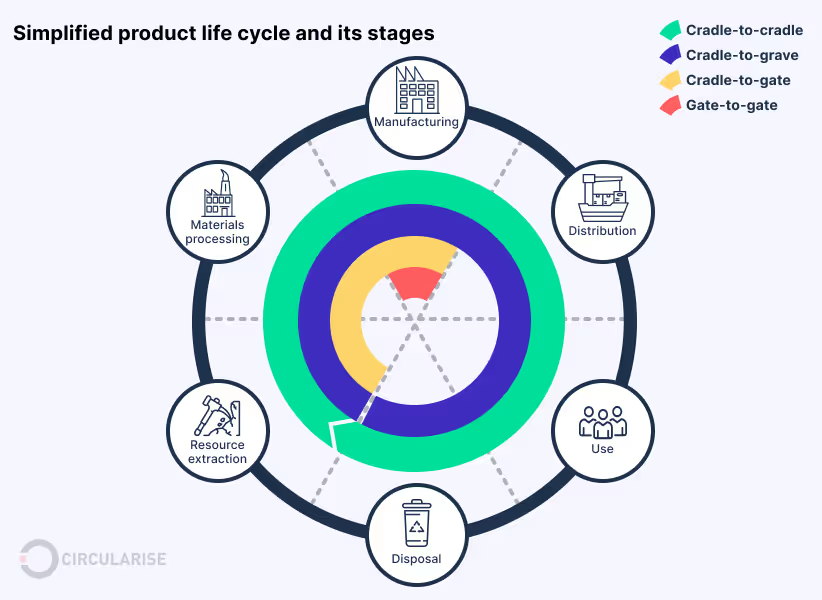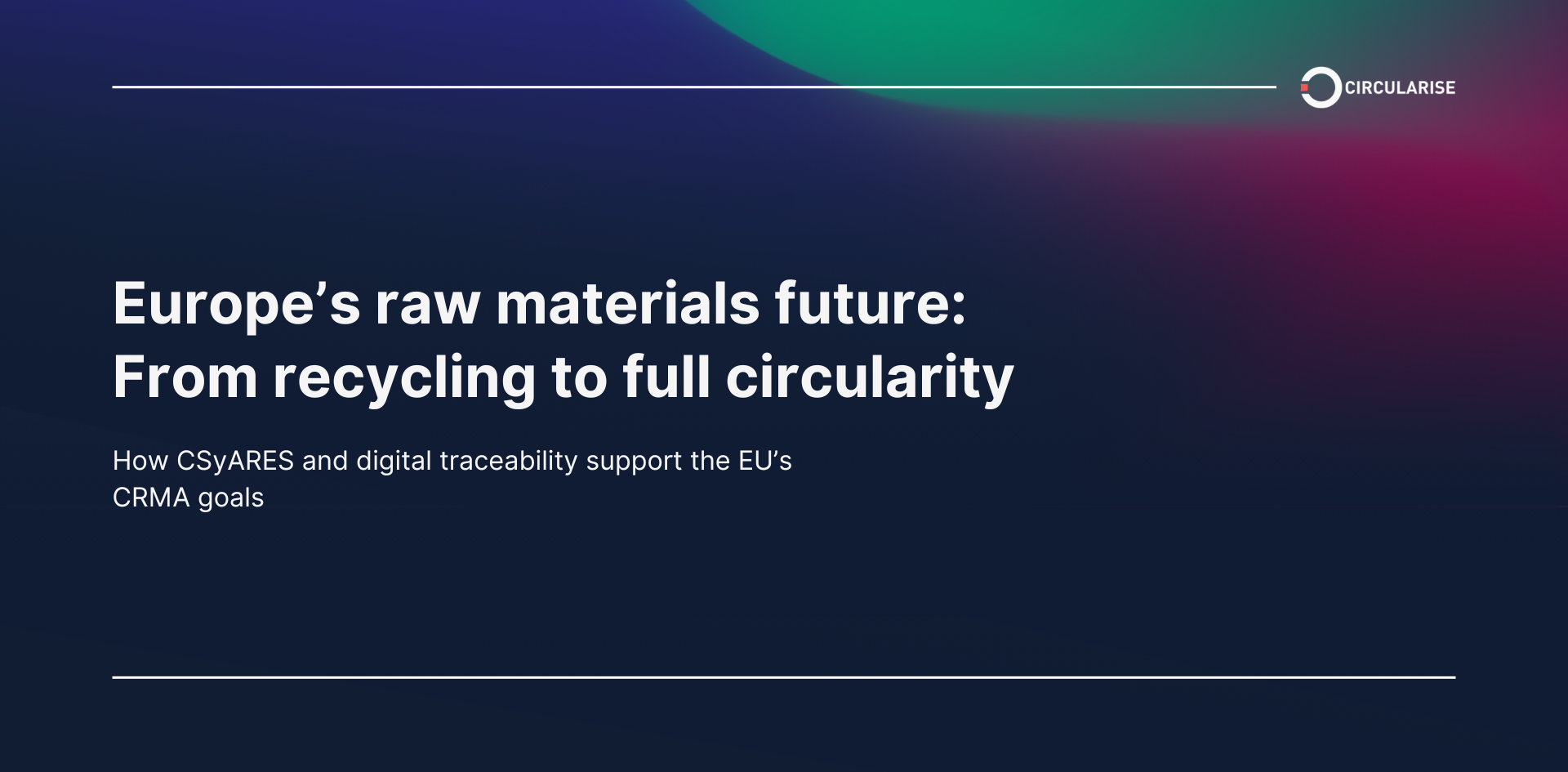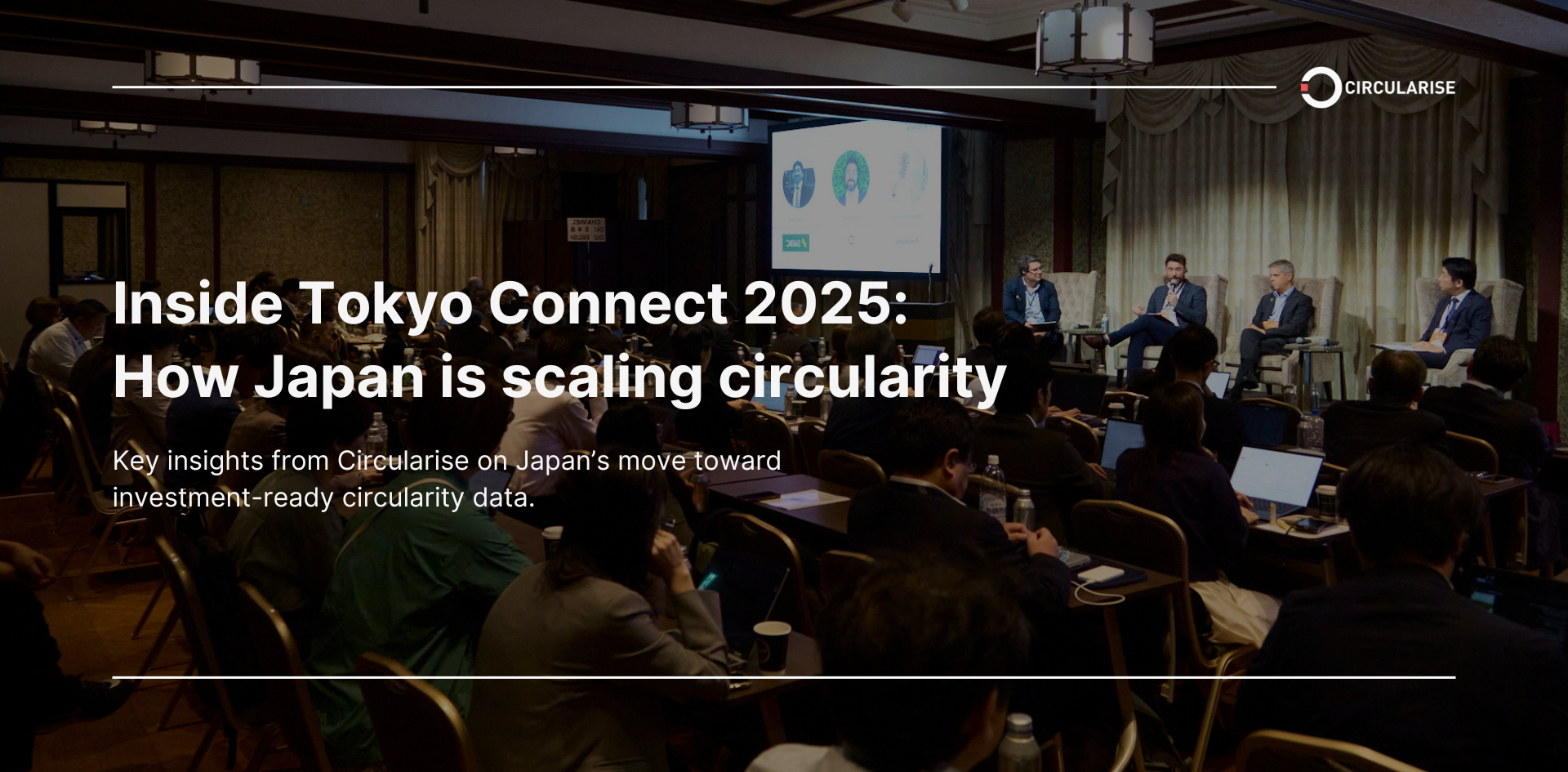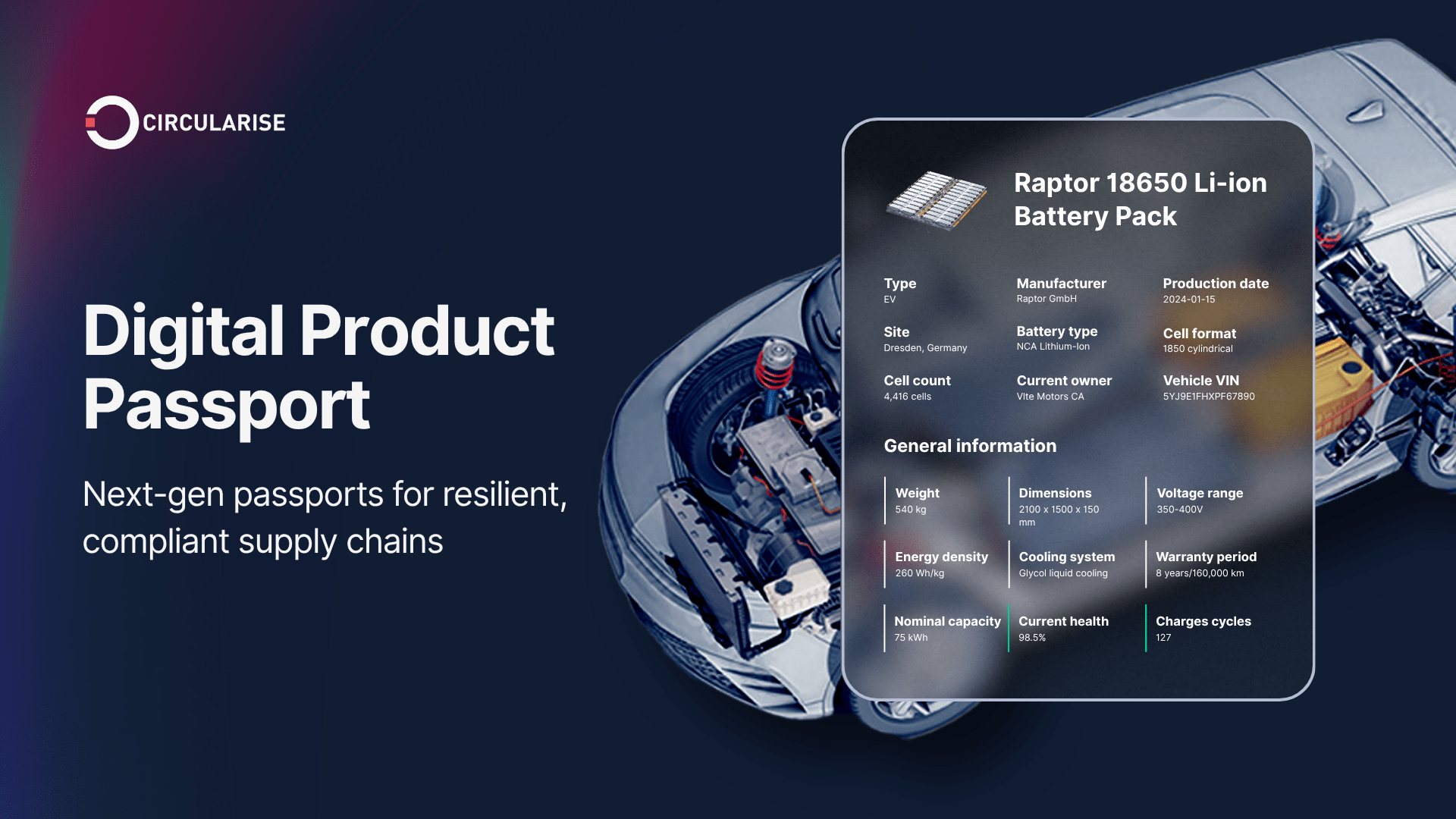Life Cycle Assessment - or LCA - is a hot topic in the Corporate Environmental Responsibility (CER) and Environmental, Social, and Governance (ESG) space right now. But what exactly does this concept entail?
LCA is a tool for sustainability assessments1 that can estimate 3 groups of impacts:
- Environmental Life Cycle Assessment, or E-LCA
- Social Life Cycle Assessment, or S-LCA
- Economic Life Cycle Costing, or LCC
All 3 components can be combined for the Life Cycle Sustainability Assessment, or an LSCA.

An example of an LCA application is comparing the environmental impact of Battery Electric Vehicles (EVs) to Internal Combustion Engine Vehicles (ICEVs or gas vehicles) over their life cycle.
Overall, LCA provides a comprehensive framework for evaluating the environmental impacts of a product or service. It is instrumental in identifying opportunities for sustainable development. The tool is incredibly diverse and hinges on the choices made during every phase of the evaluation process. Generally, LCA involves recurrent cycles, or iterations, which include 4 key phases: goal and scope definition, data collection, impact assessment, and finally, interpretation.
This article will give an overview of an environmental LCA, as this is the most in-demand type of analysis.
What is LCA used to measure?
An Environmental Life Cycle Assessment (E-LCA) is a framework for measuring the inputs, outputs, and environmental performance of a product, service, or product system2, such as:
1. A product or good
- Hardware (e.g. a car)
- Software (e.g. a computer program)
- Processed materials (e.g. plastic and metals)
2. A service (e.g. repair and transportation)
3. A product system (a combination of goods and services)
What are the key features of LCA?
LCAs can take a lot of different forms depending on the goal, functional unit, impact category, and product life cycle stage.
1. LCA goal setting
Setting the goal is a starting point for any analysis. LCAs can be used to identify more sustainable options. These types of LCA can answer questions such as, “Which plastic is more sustainable?” or “Which production method requires the least energy?”
Other LCAs conduct a hotspot analysis to identify the biggest environmental impacts of a product, service, or organisation. For example, an LCA can indicate which stage in the manufacturing process is most energy-intensive or which product life cycle stage uses the most water.
LCAs can also help set baselines and compare different options. For example, it will help define which of the two materials is more harmful to biodiversity or has a greater energy consumption.
Similarly, some LCAs are conducted to attain certifications, create reports or substantiate sustainability claims. Learn what sustainability claims are with this guide.
2. Impact categories for LCA measures
The impact category of an LCA varies3 depending on the specific goal. An impact category is essentially a detailed classification of the potential environmental effects that a product, service, or company may cause over the course of its life cycle. For example, an LCA can measure7 a contribution to climate change, ozone depletion, acidification potential, particulate matter, ecosystem or human toxicity, acidification, or water scarcity.
3. Product lifecycle stages to measure LCA
Another important factor that defines the type of LCA is the choice of a lifecycle stage in which the impacts are measured. Typically, this can be:
- Gate-to-Gate, which focuses on what happens to a product at a manufacturing site. This stage is used when, for example, a company wants to assess the life cycle impacts of a manufacturing method.
- Cradle-to-Gate, which includes the stages between material extraction from the environment and the purchase of a product.
- Cradle-to-Grave, which looks at what happens to the product until it is disposed of by the final owner.
- Cradle-to-Cradle, which goes even further and examines what happens to the product after its end-of-life stage, and how it is used for further manufacturing processes (e.g. whether it was recycled, and how).

4. What functional units are used to measure LCA
LCAs use different functional units to measure the impact. A functional unit is a quantified description of the unit of analysis4 (a product / good, a service, or a product system / combination of goods and services). It defines the reference amount for which the environmental impacts are assessed, and is based on different options or variations of a product, service, or system.
Let’s take an example of a car. A functional unit can be total kilometres driven before the end-of-life, thus giving an overview of the environmental impacts of using a vehicle. Alternatively, an LCA can also measure impacts associated with the production of one car by looking at all manufacturing processes and activities.
Example of LCA in the automotive industry
Let us apply these features using the automotive industry as an example.
- Goal: Compare the greenhouse gas emissions of Internal Combustion Engine Vehicles (ICEV) and Battery Electric Vehicles (BEV)5. From here on we will be using terms ‘gas vehicles’ and ‘EVs’ to represent the two types of cars.
- Impact category: Contribution to Climate Change - Global Warming Potential.
- Functional unit: Number of kilometres driven per vehicle (vehicle kilometres or vkm).
- Product lifecycle stage: Cradle-to-Grave, including vehicle manufacture and maintenance, fuel/electricity production, and consumption and end-of-life treatment of the vehicle.
- Outcomes: According to a study by the International Council on Clean Transportation, EVs have a lower climate change impact compared to gas vehicles if EVs use clean energy sources5.
However, notice how the outcomes of the comparison change when a different scope is chosen. For example, if you only consider cradle-to-gate (production stage) then EVs tend to have higher emissions than gas vehicles6.
The outcomes of an LCA also change when different impact categories7 are accounted for8. In this instance, the human toxicity potential of EVs is significantly higher than that of gas vehicles because of the large number of metals and chemicals used in the battery manufacturing process.
Further, the region under study and its local factors (e.g. energy mixes, the distance between manufacturing sites, and ambient temperature) also matter5. Because of the difference in regional energy mixes, life-cycle emissions are lower in EVs than gas vehicles by 66%–69% in Europe, 60%–68% in the United States, 37%–45% in China, and 19%–34% in India. Similarly, producing batteries with photovoltaic electricity instead of coal-based electricity decreases the climate impact of battery production by 69%6.

How to conduct LCA in 4 steps
LCA is an iterative process. The analysis takes place through repeated cycles (iterations) and in small parts at a time. Four key phases in an LCA are distinguished: goal and scope definition, data collection, impact assessment, and interpretation9. These steps do not always follow each other and/or happen simultaneously. For example, after the start of the impact assessment, it might become clear that more data is needed, causing the need to redo the later steps.
Step 1: Goal and scope definition
In the first stage, the scope of the analysis is identified. This includes making choices about the factors such as goal, functional unit, impact categories, and product life cycle stage. The choices made at the first stage are crucial as they define which question an LCA answers.
Step 2: Life Cycle Inventory (LCI)
Second, the data on environmental inputs and outputs is gathered and modelled. Depending on the scope of the LCA, this might include information on materials usage, water consumption, emissions, and others.
The data can come from either primary or secondary sources. The most precise data is taken from a primary source by sending questionnaires to an entity that holds the information. For example, water consumption can be estimated from the water bills and the materials consumption can be taken from the bill of materials.
In case primary data is unavailable, the information is taken from secondary LCA databases that use industry averages (e.g. GaBi Database, EcoInvent, Carbon Minds).
Step 3: Life Cycle Impact Assessment (LCIA)
Third, the environmental impacts are measured. The LCIA starts with categorising the inventory data into impact categories. Afterwards, the collected data is fed into computational models to identify cause-effect relationships and the impacts are scaled to the reference flow with quantified functional units. The outcome of the analysis is an impact estimation.
Step 4: Interpretation of the results
Interpretation of the LCA happens throughout the whole analysis, even when the LCIA is not finished. Continuous interpretation of the LCA helps to track the progress and, if necessary, to make a choice towards iterating certain steps.
When the interpretation is complete, the graphs from all the computations are presented in a report that answers the questions identified in Step 1. This report usually includes a description of the impacts, the evaluation of the study, and the recommendations.

LCA methodology is incredibly diverse and can take different forms depending on the goal and scope of the analysis. The guidelines such as ISO 14044 elaborate on how to conduct LCAs in detail10.
What are the benefits of conducting LCAs?
Even though conducting a LCA is a significant undertaking, it offers a range of benefits to businesses. In the Communication on Integrated Product Policy (COM (2003)302), the European Commission concluded that the LCA provides the best tool currently available for assessing potential environmental impacts11. It enables us to efficiently reduce environmental impacts, make informed decisions regarding sustainability, showcase efforts, comply with regulations, and predict future scenarios.
Benefit 1: Reduce environmental impacts
Measurement is a prerequisite to management. LCA offers a systematic method for identifying the hotspots in the life cycle with the greatest negative environmental impacts. For example, one LCA showed that gas vehicles have the highest impacts during the use phase because of fuel consumption5. This knowledge can be used to improve environmental performance with targeted measures, such as changing the design decisions, such as introducing innovative materials – or optimising the production processes, such as using other sources of energy or other means of transportation.
Benefit 2: Make more sustainable choices
Similarly, LCA helps to make informed decisions about two design or process options, thus saving costs and resources. For example, assessing the effect of a gas vehicle versus an EV on climate change considering its full life cycle, or analysing which material source is more energy-efficient.
Benefit 3: Showcase sustainability commitments
The results of the LCAs can be integrated into reports and eco-labelling. Thus showcasing the sustainability commitments to conscious stakeholders12, such as customers, regulators, and investors in a reliable way.
Benefit 4: Comply with regulations
LCA standards help to keep up with the developments in global and regional sustainability reporting. By assisting in sustainability reporting, LCA ensures compliance with regulations such as the Corporate Sustainability Reporting Directive (CSRD), the German Supply Chain Act, and the Green Claims Directive. For example, the Green Claims Directive makes it mandatory to substantiate green claims about a product’s pollution impact, which can be achieved by using primary data on environmental impacts relevant to the product’s specific life cycle stage13.
Similarly, LCA equips businesses with the necessary tools to meet the upcoming ecodesign requirements, which apply to the value chains of products ranging from industrial and electric vehicle batteries to textiles.
Benefit 5: Analyse future scenarios
LCA can be used to test different options ex-ante in a design or pilot stage14. Such an LCA that analyses future scenarios is called an “ex-ante LCA” or “prospective LCA”. This can prevent environmental burdens, reduce costs, avoid regrettable investments and substitutions, enable early design improvements, and anticipate changes in regulations.
How Circularise can help with your LCAs
Today, companies rely heavily on averaged secondary data to perform LCA calculations, leading to accidental greenwashing due to inaccurate sustainability claims, or false estimations of green procurement initiatives being made. The Circularise platform allows you to efficiently collect primary data from across the supply chain beyond tier 1, for accurate LCA calculations.

See how Circularise’s Digital Product Passports are used for LCAs on this webpage.

Circularise is the leading software platform that provides end-to-end traceability for complex industrial supply chains. We offer two traceability solutions: MassBalancer to automate mass balance bookkeeping and Digital Product Passports for end-to-end batch traceability.
Learn how to securely share primary LCA data with members of your value chain.





